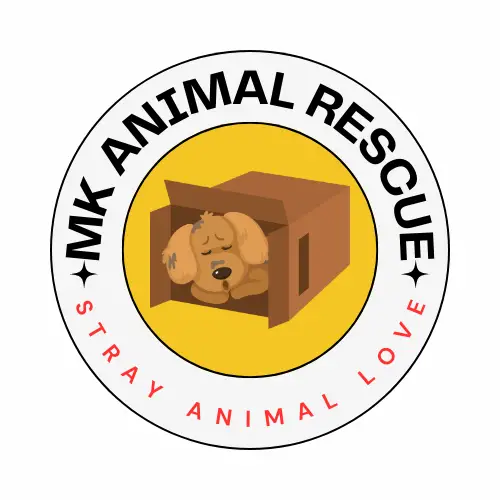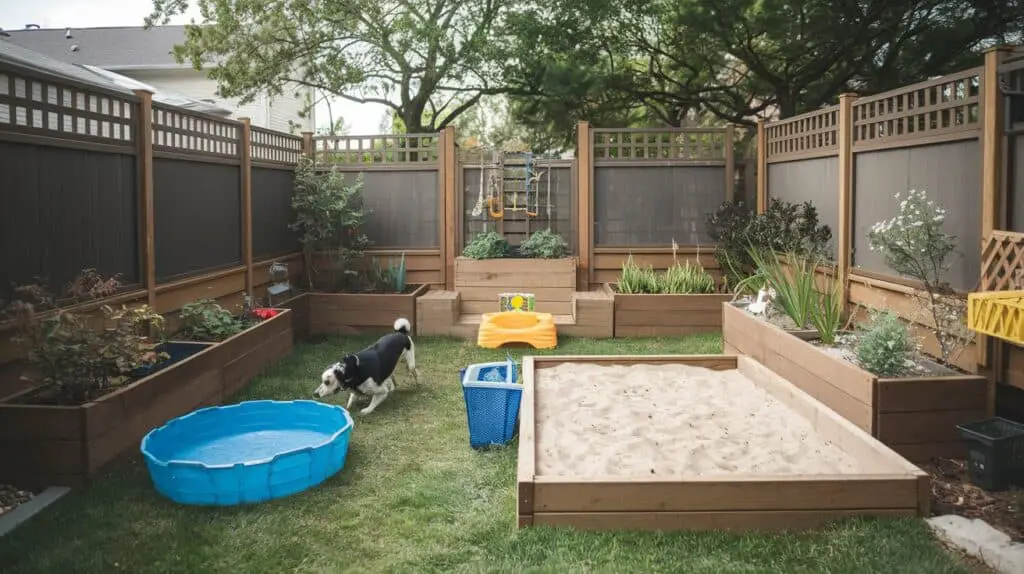
Designing a backyard space for your dog is one of those things that seems simple—until you actually start doing it. You want it to be safe, dog-proof, fun, and maybe still look nice when you glance out your window. Whether you’ve got a big open yard, a narrow side path, or a small patio, the right fenced dog area can make a huge difference in your pet’s quality of life (and yours too, honestly).
From choosing the best backyard fence ideas for dogs to designing play zones and pet-safe plants, here’s how to create a secure, comfortable fenced area for dogs that fits your space and budget.
Start with Safety: Choosing the Right Fence Style
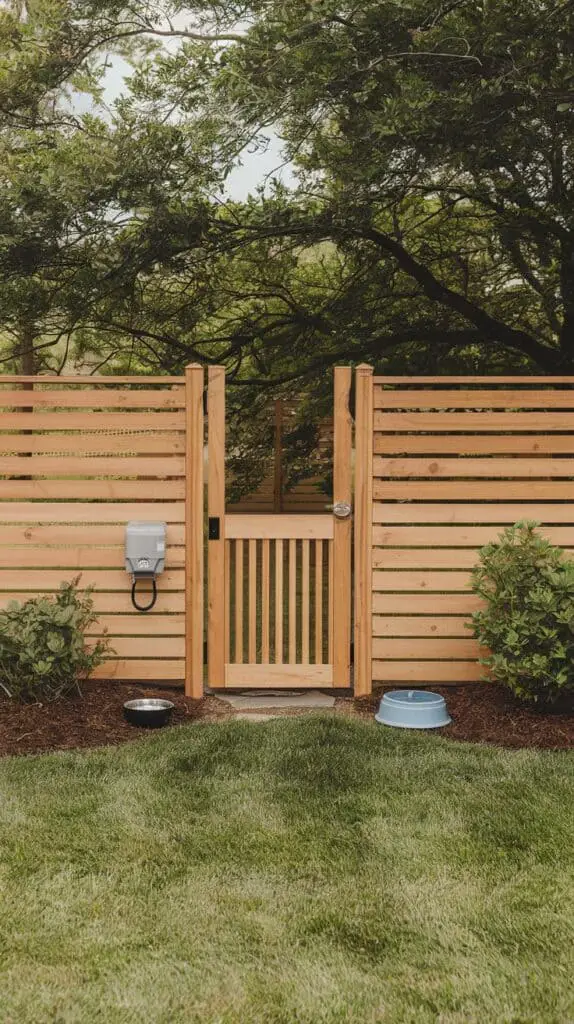
The first and most important step is securing the area. A good fence keeps your dog in and unwanted things out. Your choice depends on your dog’s size, personality, and how much space you’re working with.
Some practical backyard dog area ideas:
- Wooden privacy fence: Great for larger dogs or pups that get easily distracted
- Welded wire or metal panels: A more open feel, often cheaper and easier for DIY
- Temporary dog fence ideas: Use portable mesh or exercise pen fencing for renters or flexible spaces
- Decorative garden fence: Ideal for small dogs in pet yards with a more relaxed vibe
Whatever you choose, make sure it’s high enough (at least 4 feet, often 6 for jumpers), and that it sits flush with the ground so diggers can’t escape underneath.
Use the Yard Layout to Your Advantage

Before you start building anything, take a look at your layout. Where does your dog naturally gravitate? Is there a sunny spot they love to nap in? A shaded corner that’s cool even in summer?
You don’t need to fence your entire yard—designing a dog run in a backyard side yard is a smart use of unused space. Small yard ideas for dogs work best when you zone off one part for play and another for lounging.
Tips:
- Use the side of your house or garage as one boundary
- Add a gate or dog door for easy in-and-out
- Create a dog enrichment yard by adding logs, low platforms, or sniffing zones along the fence line
And don’t forget about visibility. If your dog barks at every passerby, a solid fence may help reduce stress (and noise).
Pick a Surface That’s Safe for Paws and Easy to Clean
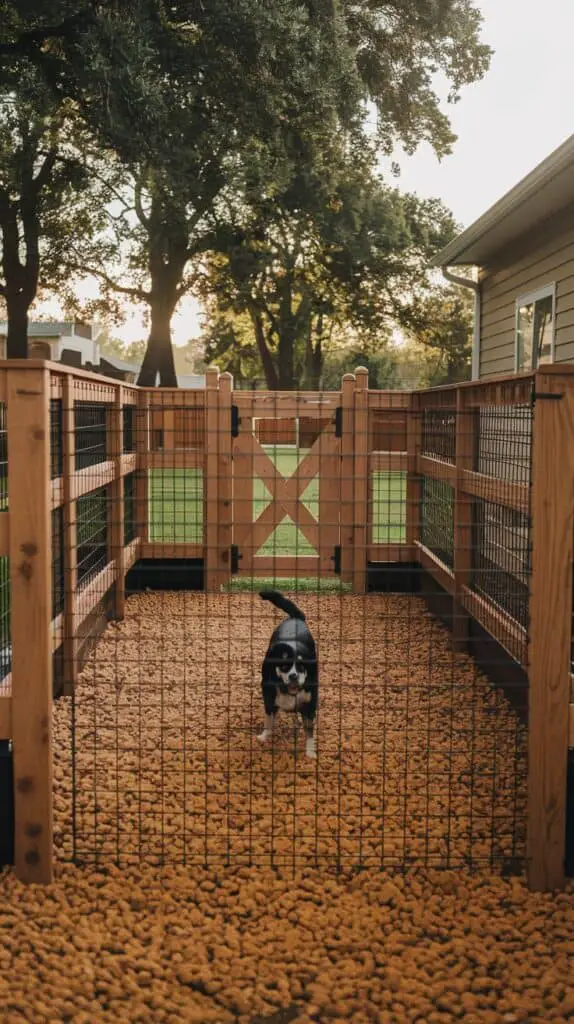
The ground surface in your dog’s area matters more than most people think. Wet grass turns to mud fast. Gravel can be too rough for soft paws. And mulch? Some types are toxic.
Here are some dog-friendly backyard landscaping ideas:
- Artificial turf: Soft, mud-free, and low-maintenance
- Pea gravel or decomposed granite: Great drainage and low cost
- Poured concrete or DIY patio with pavers: Long-lasting and easy to clean
- Raised decking or outdoor rugs: Cozy and ideal for shaded lounge zones
If you’re building a DIY dog fence outdoor cheap, don’t blow your budget on the flooring—just make sure it’s something safe, easy to hose off, and won’t become a muddy mess after one rainy day.
Think Like a Dog: Add Enrichment Features

Dogs don’t just need space—they need stuff to do in it. A well-designed area for dogs in the backyard should include mental stimulation, exercise opportunities, and places to relax.
Add-ons to consider:
- A dog garden fence protecting herbs or veggies but still letting them sniff nearby
- A shaded bench or covered nook for hot days
- A dig pit with sand or soil so they won’t dig up your lawn
- A tunnel or hideaway for shy dogs
- Rotating toys or hanging treat puzzles for curiosity and play
If you’re using part of your dog-friendly patio, tuck a comfy dog bed in a corner or set up a crate-style outdoor kennel with open sides and shade. It’s all about creating a balance between active play and calm retreat.
Create a Space That Works for Humans Too
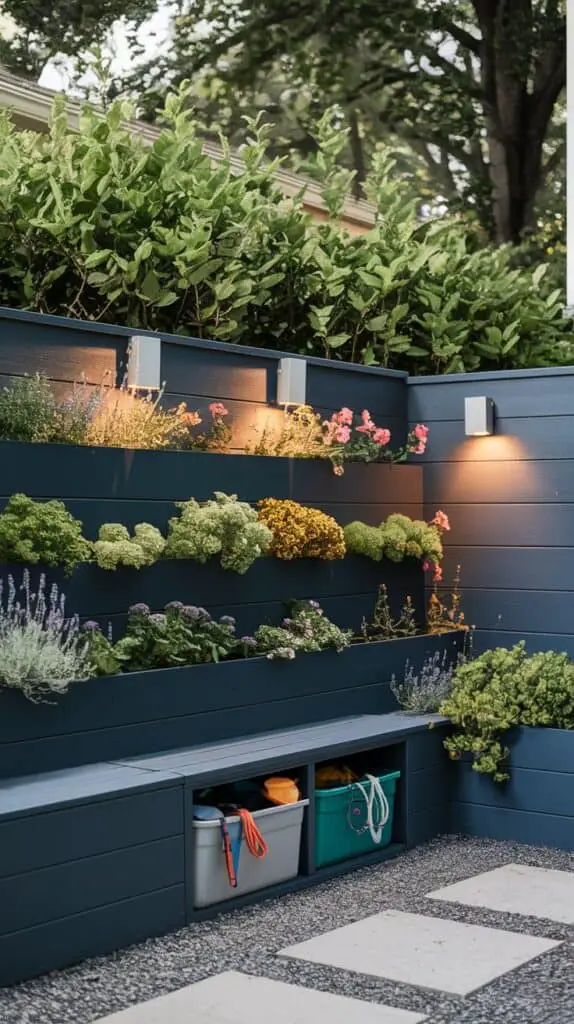
Yes, this space is for your dog—but you have to live with it too. Designing a pet-friendly garden or dog-friendly patiocan be both practical and attractive.
Ideas that look good and feel good:
- Raised planters to keep herbs and flowers safe from curious noses
- Stylish fencing painted to match your home or deck
- A path made from gravel or pavers that leads to your dog’s zone
- Storage bench or bin for leashes, poop bags, and toys
- Lighting for early morning or evening potty runs
Want to keep your lawn usable? Designate one section for your dog with fencing or low borders, and keep the rest of your yard people-focused.
Keep It Flexible and Budget-Friendly

Not every dog yard needs to be a forever project. If you’re renting or just testing out ideas, temporary setups can still work well.
Budget-friendly DIY dog areas in backyard:
- Exercise pens or portable fencing to divide part of your yard
- Low-cost roll-out fencing with garden stakes
- Potted plants and container gardens to section off space
- Dog-safe lattice or wire panels mounted to posts for flexible fencing
- Plastic kiddie pools or sandpits for summer fun
Over time, you can upgrade to more permanent structures as your dog’s needs change or your space evolves. The key is to start with safety and grow from there.
Final Thoughts
Designing a fenced area for dogs in your backyard doesn’t mean giving up beauty, flexibility, or your entire lawn. It’s about thinking like a dog and a homeowner—balancing comfort, safety, and visual flow.
Whether you’re working with a tiny side yard or a sprawling lawn, a little thoughtful planning can go a long way. Choose surfaces that stay dry, fences that feel secure, and features that keep your dog enriched and relaxed.
And most of all—make it a space that brings both of you a little joy each time you step outside.
